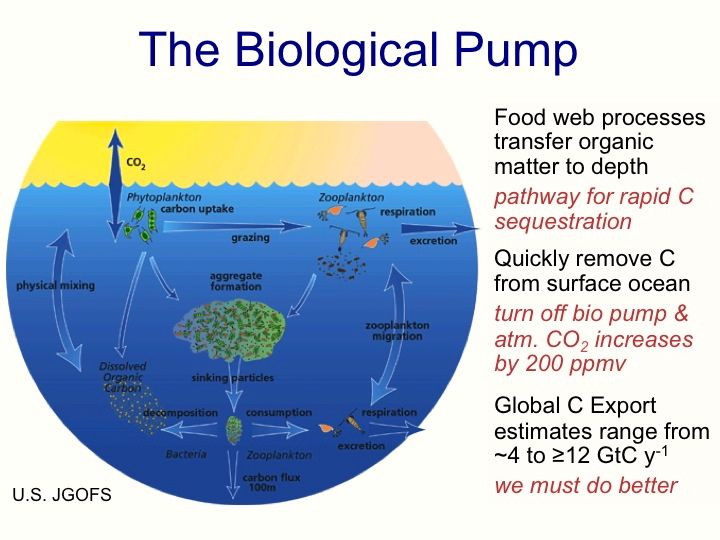Study Shows How Ocean Life Captures Carbon Dioxide And Detains It In Biological Material

A team of researchers from the University of California Santa Barbara has conducted a new study, which uses observations from space to help analyze how ocean life plays a role in the global carbon cycle.
The researchers studied the life cycle of phytoplankton and zooplankton, tiny microscopic organisms usually found at the bottom of the ocean food chain, and incorporated their life cycle into a new model for assessing carbon emissions from the world's oceans. The researchers' food web-based model used satellite data to observe how phytoplankton produce organic matter using carbon dioxide in the water.
“What we've done here is create the first step toward monitoring the strength and efficiency of the biological pump using satellite observations,” David Siegel, director of the Earth Research Institute at UC Santa Barbara, said in a statement. “The approach is unique in that previous ways have been empirical without considering the dynamics of the ocean food web.”
As part of the study, published in the journal Global Biogeochemical Cycles, the researchers focused on the ocean's biological pump, which exports organic carbon from the euphotic zone -- the depth of the water in the ocean that is exposed to sufficient sunlight for photosynthesis to occur.
According to the researchers, the biological pump exports carbon through sinking minute particles largely from zooplankton feces and aggregates of algae. And, once these particles leave the euphotic zone, sinking into the ocean depths, the carbon can be confiscated for as little time as a season or as long as centuries.
Carbon is present in the atmosphere and is stored in soil, oceans and the Earth’s crust. Any movement of carbon between -- or in the case of the ocean, within -- these reservoirs is called a flux.
“Quantifying this carbon flux is critical for predicting the atmosphere's response to changing climates,” Siegel said. “By analyzing the scattering signals that we got from satellite measurements of the ocean's color, we were able to develop techniques to calculate how much of the biomass occurs in very large or very small particles.”
Based on the study’s results, the researchers predicted a mean global carbon export flux of 6 petagrams, or Pg, each year. One petagram is equal to 1,015 grams (2.3 pounds). According to scientists, this is a huge amount, and it is roughly equivalent to the annual global emissions of fossil fuel. Currently, fossil fuel combustion represents a flux to the atmosphere of approximately 9 Pg every year.
“We need to understand where carbon goes, how much of it goes into the organic matter, how that affects the air-sea exchanges of CO2 and what happens to fossil fuel we have emitted from our tailpipes,” Siegel said.
© Copyright IBTimes 2024. All rights reserved.






















